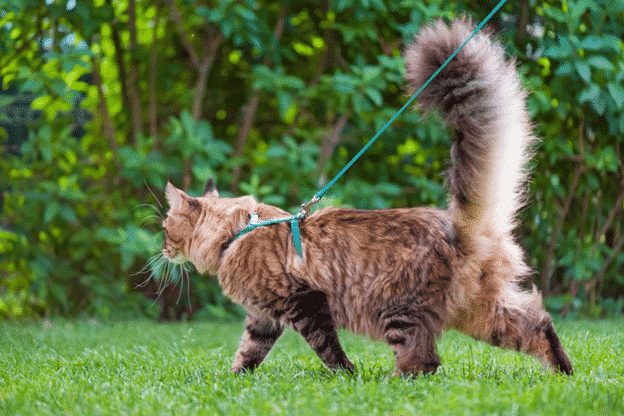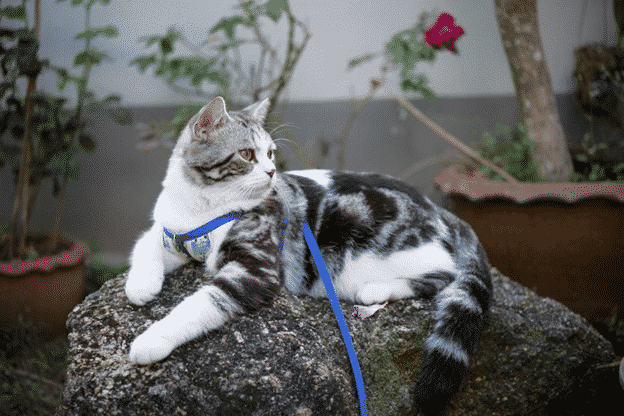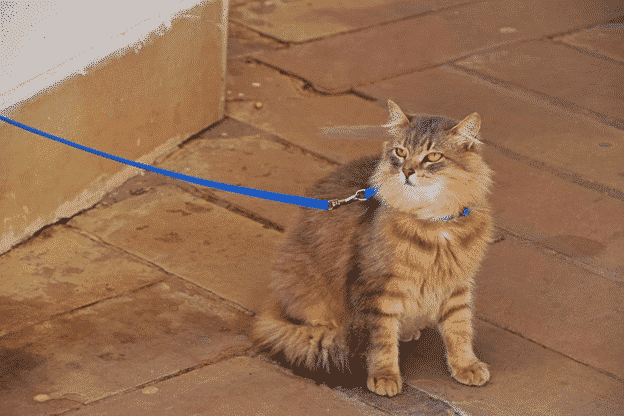

How to Leash Train Your Cat for Cat Walking
" Want to take your cat outdoors for a stroll? Read further to find out how you can least train your cat. "
Leash training isn’t only for dogs, cats can also be trained to walk on a leash. If you want your feline friend to accompany you on outdoor adventures in the backyard or the porch, you will first need to look for a harness that fits it comfortably. Leash training your cat won’t only be helpful when you’re outside, but it will also come in handy when you’re traveling or taking your cat to the vet. Moreover, it’s also a great way to get your cat to exercise.
While most cats can be trained to walk on a leash, certain felines may be more accepting of wearing a harness and strolling outdoor. The best time to introduce your cat to a harness or leash is when it is a little kitty so that it grows up to be naturally more accepting of it. However, older cats can also be given leash training and made comfortable with it only if leash training is constructed to be a positive experience for them.
If you think your feline friend qualifies for leash training, here is how you can leash train your cat.
Introduce the Harness
Start the process by introducing your cat to a harness, making it a positive experience for your kitty. You can start by placing the harness right beside your cat’s food dish or exposing your kitty to the harness while feeding it treats for positive reinforcement. Since new noises can be quite alarming for kitties, make sure to accustom your cat to the sounds of the harness such as snapping or Velcro noises.

Put on the Harness
Now that your feline is well-acquainted with the harness, you should slip it on him without fastening it. Keep the positive reinforcement going by offering your pet more treats as a way to help it associate the harness with a positive experience.
Once your cat gets comfortable with this, you can then fasten the harness and adjust the fit. Make sure that you make it only so tight that you are able to fit one or two of your fingers beneath it. Keep the harness on for your cat for a few minutes and then give it another food reward. Continue doing this for several days and monitor your cat’s reaction to the harness. If your kitty seems comfortable with it, leave it on for a while longer. However, if your pet appears to be getting upset, you can distract it with a tasty treat and slip the harness off.
It is very normal for felines to freeze, refuse to walk, or walk strangely for the first few times when they are wearing a harness. There’s a very high chance that your cat hasn’t experience such a sensation on its back before, so it will take it some time to adjust.
Attach the Leash to the Harness
After several days and weeks, when your cat is finally comfortable wearing the harness, it’s time to attach the leash to it. You should do this in an indoor setting. For instance, take your cat in a safe room where it can’t snag its leash on furniture, and then attach the leash to the harness. You will want to let the leash drag behind your kitty as you feed it lots of treats and engage it with toys.
Some cats might not be comfortable with a dragging leash behind them. In such cases, it’s best to hold the leash and allow your cat to wander feeling. Once your feline is accustomed to the feel of the leash, follow it around your home while holding the leash loosely in your hand. During this time, it is critical to supply your cat with lots of treats and praise.
Once you think that both you and your kitty have had enough practice with this, it’s time for you to gently guide your cat by applying a little pressure on the leash and calling your cat to you. If your cat seems to be following your instructions, reward it with a treat. This process is kind of tricky as you’ll want to ensure that your cat doesn’t freak out when it feels the pressure of the leash holding it back.

Take Your Kitty Outside
If your cat has mostly been indoors, chances are that it will be on high already when taken outside for the first time. The key is to introduce it to outdoors gradually. You can start by walking your feline to an open door and encouraging it to go outside. You can also toss a treat outside the door to lure your cat while ensuring that you are constantly monitoring it.
Don’t immediately take your kitty to the park or another open area; start with your fenced-in backyard. You can pick up your harnessed kitty and carry it to the backyard. Make sure that you stay right by its side until it decides to do a little exploring. Hold the leash loosely while following your cat around, ensuring that it doesn’t go farther than its ready.
Additional Tips
Leash training your cat is quite different for leash training a dog. Therefore, it requires different equipment. If you’re buying a leash for your cat, make sure that it’s well-fitted, lightweight, and is made of cloth or nylon. Never make your cat wear a small dog harness or put on a chain leash for them.
There’s one thing you need to bear in mind – walking on a leash and going outdoor isn’t for every cat! Some cats will never become comfortable with being on a leash or venturing outdoor due to their health, age, or personality. In such cases, you shouldn’t force your kitty outside its comfort zone.
Discover how to create a joyful, healthy home for your pet.
Subscribe to your weekly rundown of practice, real life ideas and training tips straight to your inbox.


